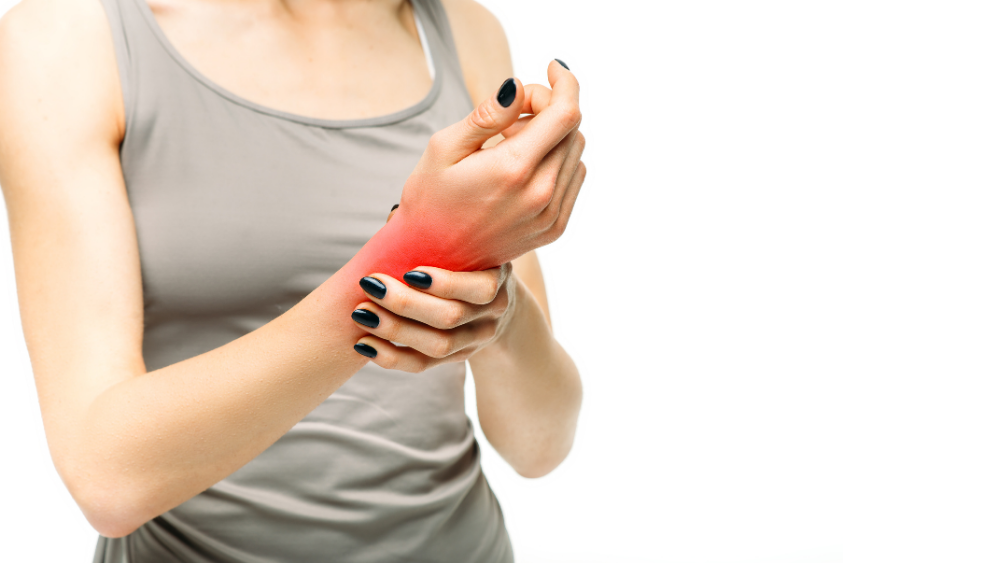It’s no secret that pregnancy and new motherhood come with all kinds of physical changes—but one issue that often flies under the radar is postpartum carpal tunnel syndrome. If you're experiencing pain, numbness, or tingling in your hands and wrists after giving birth, you're not alone—and the good news is, there are ways to find relief.
What Is Postpartum Carpal Tunnel Syndrome?
Carpal tunnel syndrome occurs when the median nerve, which runs through the wrist, becomes compressed. This nerve is responsible for sensation and movement in parts of your hand, and when it’s pinched, it can cause discomfort ranging from mild tingling to sharp pain.
While it’s common during pregnancy due to fluid retention and swelling, carpal tunnel can continue—or even begin—after childbirth, as postpartum swelling can still put pressure on the nerve. And you don’t have to have had it during pregnancy to develop it afterward.
In fact, research shows:
- Around 30% of pregnant women experience carpal tunnel syndrome.
- Roughly 15% of new moms still have symptoms one month postpartum.
Factors like gestational diabetes and significant weight gain during pregnancy may increase your risk, but even moms without these risk factors can develop symptoms.
For many, the condition resolves on its own within a few months—but for others, it can persist and require treatment.
Common Symptoms to Watch For
Postpartum carpal tunnel can show up in a variety of ways. You might notice:
- Numbness, tingling, burning, or pain in your thumbs and fingers
- Electric shock-like sensations that travel down your arms
- Tingling or pain in your forearm, often worse at night
- Hand weakness that makes simple tasks, like buttoning clothes, tricky
- A tendency to drop things more easily
If you notice sudden swelling in your hands, especially with other symptoms like headache, vision changes, nausea, or trouble breathing, contact your provider right away. These could be signs of postpartum preeclampsia, a serious condition that needs immediate attention.
It's also worth noting that not all postpartum wrist pain is carpal tunnel. Another common condition is De Quervain's tenosynovitis, which affects the tendons that run to the thumb. It’s often caused by repetitive movements—like holding or feeding your baby—and has symptoms similar to carpal tunnel, though it requires different treatment.
How to Relieve Postpartum Carpal Tunnel
The good news? There are several simple, safe ways to ease carpal tunnel symptoms during the postpartum period. Treatment options may include:
✅ Wrist Splints or Braces
Wearing a splint—especially at night—can keep your wrist in a neutral position, which reduces pressure on the median nerve and can significantly ease discomfort.
✅ Hand and Wrist Exercises
Gentle stretching and nerve-gliding exercises may help improve range of motion and reduce tension. Your provider might also suggest a short round of physical therapy.
✅ Over-the-Counter Pain Relief
Nonsteroidal anti-inflammatory drugs (NSAIDs), such as ibuprofen or naproxen, can help reduce inflammation and pain. They're generally safe for breastfeeding moms, but always check with your provider before starting any medication.
✅ Steroid Injections
If symptoms persist, a steroid shot may be recommended. It helps calm inflammation around the nerve and is considered safe while nursing. In more stubborn or severe cases, your provider might discuss surgery.
❌ What About Vitamin B6?
Some believe that taking vitamin B6 can relieve carpal tunnel symptoms—but unless you have a diagnosed deficiency, it likely won’t help. A healthy postpartum diet usually gives you all the nutrients you need.
Will It Go Away on Its Own?
For many new moms, yes—postpartum carpal tunnel gets better as your body gradually returns to its pre-pregnancy state and the swelling goes down. Most symptoms improve within a few months.
However, if symptoms linger or worsen, your provider may recommend a minor outpatient surgery. During the procedure, a small cut is made in your palm to release the transverse carpal ligament, relieving pressure on the median nerve. The procedure is quick, and while recovery may take several weeks, many find long-lasting relief afterward.
When to Talk to Your Doctor
Carpal tunnel syndrome can sometimes lead to permanent nerve damage if left untreated. So don’t ignore it—especially if you're still feeling tingling, pain, or weakness weeks after giving birth.
Bring it up at your postpartum checkup or sooner if needed. Your provider can assess your symptoms and guide you toward the right treatment, whether that’s a splint, therapy, or something more.
Bottom line: Postpartum carpal tunnel is common, but it doesn't have to be something you just “deal with.” With the right care and a little patience, most moms find real relief and get back to feeling like themselves again.

